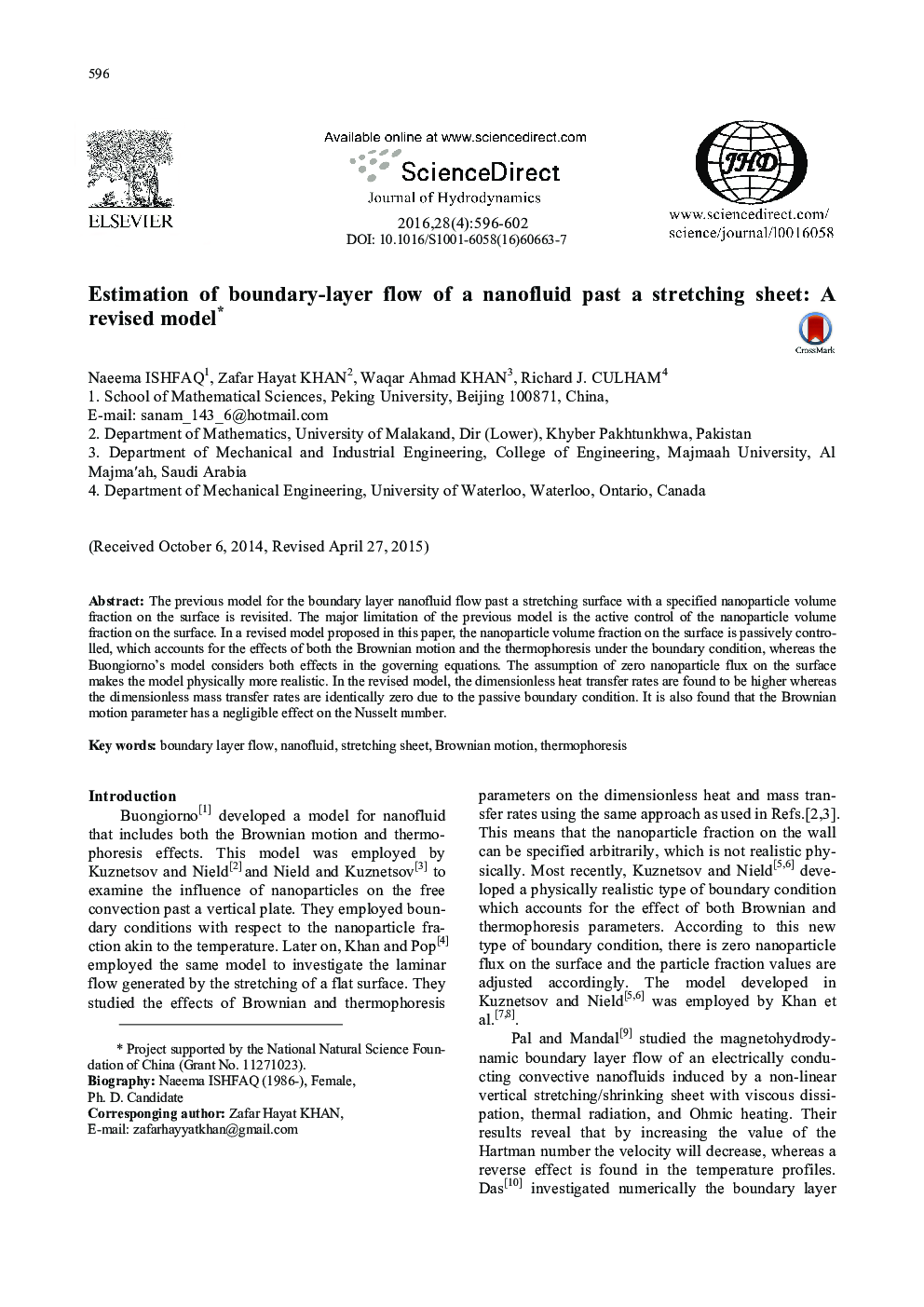| Article ID | Journal | Published Year | Pages | File Type |
|---|---|---|---|---|
| 1721816 | Journal of Hydrodynamics, Ser. B | 2016 | 7 Pages |
The previous model for the boundary layer nanofluid flow past a stretching surface with a specified nanoparticle volume fraction on the surface is revisited. The major limitation of the previous model is the active control of the nanoparticle volume fraction on the surface. In a revised model proposed in this paper, the nanoparticle volume fraction on the surface is passively controlled, which accounts for the effects of both the Brownian motion and the thermophoresis under the boundary condition, whereas the Buongiorno's model considers both effects in the governing equations. The assumption of zero nanoparticle flux on the surface makes the model physically more realistic. In the revised model, the dimensionless heat transfer rates are found to be higher whereas the dimensionless mass transfer rates are identically zero due to the passive boundary condition. It is also found that the Brownian motion parameter has a negligible effect on the Nusselt number.
